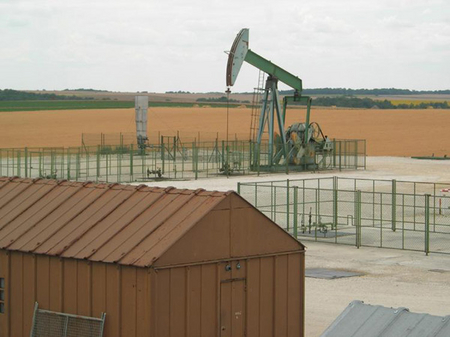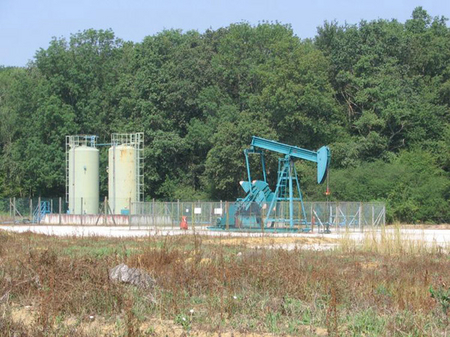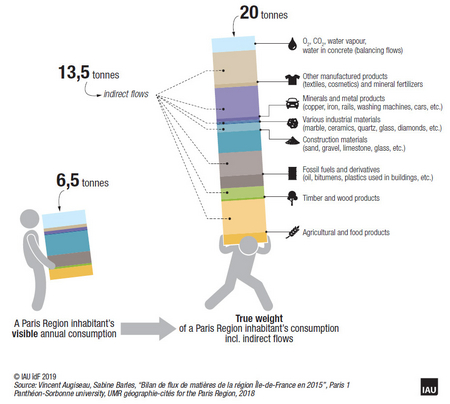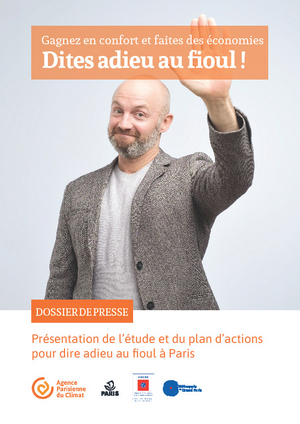Fossil fuels: a tough habit to kick
Chronicle of Energy Transition

In a context of recession due to the current health crisis, crude oil prices are tumbling. The outcome may be a massive return to fossil fuels when the economy recovers, scuppering the efforts made to achieve energy transition and carbon-neutrality goals. Although freeing ourselves completely from fossil fuels seems to be a far-off objective, how can we improve our understanding of our dependency on them and find ways of reducing it?
The health crisis, which has turned into a global economic and financial crisis, is adversely affecting the market for oil, which is a driver of economic growth. While many voices were being raised before the COVID-19 crisis concerning the maximum level of global conventional and non-conventional oil production (‘peak oil’), oil prices are collapsing due to a worldwide drop in demand and overproduction in exporting nations.
This drop in prices has also led to the closure of shale oil extraction sites, which are no longer profitable because they depend on high barrel prices.
Low oil prices could result in increased demand for oil when the economy recovers (as was the case after the 2008 recession) and thus cancel out energy transition efforts by making alternative energy sources less competitive.
However this context must not make us lose sight of the carbon neutrality goal where fossil fuels, responsible for most greenhouse gases, must be sharply reduced in our energy mix and be replaced wherever possible by renewable energy sources.
The Programmation Pluriannuelle de l’Energie (PPE: multi-annual energy plan), one of the two pillars of the energy and climate strategy in France along with the low-carbon strategy, was published in the Journal Officiel on 23 April 2020 and sets several goals relating to fossil fuels, including:
- a 40% reduction in primary fossil energy consumption by 2030 (compared to 2012);
- closure of the last four coal-fired power stations by the end of 2022;
- ending the use of coal in heating networks by 2023;
- ending sales of new fossil-fuel cars by 2040.
In Île-de-France (the Paris region), fossil fuels (oil, coal, natural gas) represent two thirds of energy consumption, alongside renewable energy sources (8%) and nuclear power. This dominant role, although it has allowed the country’s economy to develop, is being challenged by three key factors: air quality, which is being affected by pollutant and particulate emissions; tensions arising from the global supply of fossil fuels; and climate change, intensified by greenhouse gas emissions that are intrinsically linked to the use of fossil fuels.
The energy and climate strategy adopted by the Paris region on 3 July 2018 aims primarily to reduce dependence on fossil fuels and nuclear power by 2030 compared to 2015.
The latest figures from the ROSE (Réseau d’Observation Statistique de l’Energie) show a reduction of 2.2% in the consumption of oil products and coal in 2017 compared to 2015, and a reduction of 21.6% compared to 2005. For natural gas, consumption had risen by 2% compared to 2015 but fallen by 20.8% compared to 2005.
Improving our understanding of reliance on fossil fuels
Where do these fossil fuels come from in a region that also extracts them (to a certain extent)?
Who consumes these fossil fuels, and to what extent can this consumption be reduced?
What opportunities exist for replacing them with renewable sources of energy in terms of intensity, efficiency and deployment?
What strategies carried out by public and private actors might reduce this dependency?
These are all key questions to be answered as we attempt to assess this dependency and envision ways to end it.
Île-de-France: a dependent region
“In France we don’t have any oil, but we do have ideas”.
This phrase, which is well known in France, refers to the importance of oil imports in our economic system and the ability of French engineering to attempt to find solutions. During the post-war boom, France became more and more dependent on American oil and set out in search of hydrocarbons in its own territory. The first discovery of French oil was made on 22 February 1958 in the village of Coulommes in the département of Seine-et-Marne. The Paris Basin has one of the main oil fields in metropolitan France, alongside the Aquitaine Basin and the Grand Est region.
Although it has been in decline for many years, petroleum extraction in the Paris region represented 7% of our consumption in 2015 in tons oil equivalent (ROSE, review of energy consumption and production, 2015 figures) and 62% of total oil production in France
Two pipelines, one refinery and 11 oil terminals supply the region with petroleum products. Shale oil deposits were discovered in the départements of Seine-et-Marne and Essonne, but an act of Parliament of 13 July 2011 forbids their main mining technique, namely hydraulic fracturing (fracking), and mining permits have been frozen. One of the key planks of the 2017 French Climate Plan is to halt hydrocarbon exploration and mining in France by 2040. The remainder of petroleum products used in France is imported from a range of different countries.
Coal is less and less present in the energy mix, particularly since the closure of coal-fired power stations and the gradual replacement of coal in steam power plants serving district heating networks. However France continues to import coal for industrial purposes (the steel industry, for example).
Fossil fuel supply chains are getting longer because of the exhaustion of French or European resources and the economic, environmental and social difficulties involved in maintaining mining activities in the country. The latest annual report from the International Energy Agency states that the peak of conventional oil production occurred in 2008 and that global oil production compensates for this by exploring and extracting unconventional oil (shale oil in the US and Canada). Similarly, increased distance from primary energy supply sources causes a number of problems: geopolitical tensions, competition on resources, local conflicts, extraction conditions, risk of loss and pollution during transportation, etc.
Low oil prices during the COVID-19 health and economic crisis can be a source of economic and social destabilisation in exporting countries whose economies depend on petroleum extraction and are not very diversified. The desire to move away from fossil fuels will also lead to a change in geopolitical and economic relations with exporting nations. Although seldom mentioned in energy transition strategies (multi-annual energy programmes, hydrocarbons legislation, regional air/energy/climate strategies), France’s foreign relations are nonetheless crucial to energy transition.
Invisible fossil fuels
It is important to look further afield than our consumption of fossil fuels in the strictest sense.
Grey energy of materials in life-cycle analyses, indirect greenhouse gases (SCOPE 3) in greenhouse gas reporting, hidden or indirect flows in material flow (or urban metabolism) analysis... these concepts point to an overarching problem: the way our society works creates a growing need for delocalised energy and materials that are not visible at point of use. The supply of raw materials for manufactured goods consumes fossil fuels, as do their production and distribution. They may also be produced in countries where the energy mix is highly carbon-dependent (especially for electricity production). Combating our dependence on fossil fuels thus requires a whole range of initiatives that go beyond public transport and residential / tertiary construction, across our entire economic system.
Material flow analysis in the Paris region for 2015 shows that the region consumes 14 million tons of fossil fuels and derived products (plastics, asphalt), equivalent to 1.2 tons per inhabitant per year. Taking into account indirect flows linked to imports and exports of all types of products (manufactured goods, food products, etc.), consumption of fossil rises to 41 million tons (3.4 tons per inhabitant per year). This means that our “fossil footprint” almost trebles in size when we broaden the scope of our dependence on fossil fuels. This justifies including new modes of production and consumption in energy transition initiatives.
How can we hope to leave fossil fuels behind?
Fossil fuels are widely used in public transport and residential and tertiary construction in the Paris region. How can we hope to halt consumption of fossil fuels when these sectors are so vital to the life of the region? Here are four initiatives carried out by different actors in order to (partially) remove fossil energy sources from our energy mix.
Low Emissions Zones in the City of Paris and the Grand Paris Metropolitan Area
Recurrent problems linked to air quality and low vehicle upgrade rates in the Paris region have led public authorities to implement a statutory system known as the Zone à Faibles Émissions (ZFE: Low Emissions Zone). First initiated by the Paris Council in 2015 in parallel with the rollout of the Crit’air sticker programme, then implemented by the Métropole du Grand Paris in 2019, the ZFE bans all Class 5 or unclassified vehicles and, at peak pollution times, temporarily bans the most polluting vehicles from using the roads. The Paris Council plans to ban vehicles classified Crit’air 2 and 3 by 2024, signalling the end of diesel vehicles in the city. The deployment of the ZFE will lead, in the medium term, to more environmentally friendly behaviours (transfer towards public transport, soft mobility, car sharing and car pooling) and the replacement of private and company cars with more efficient vehicles or vehicles with new types of engine (hybrid, rechargeable hybrid, NGV/BioNGV, battery electric, hydrogen).
In parallel, the French Climate Plan aims to end sales of internal combustion cars by 2040, an aim that is reflected in the act of parliament entitled the Loi d’Orientation des Mobilités (Mobility Orientation Act).
La Poste and its subsidiary Véhiposte: the world’s largest fleet of electric vehicles
For several years the La Poste group has been committed to energy and green transition, and it has one of the largest fleets of vehicles in France (almost 60,000 vehicles). Managed by its subsidiary Véhiposte, this fleet lies at the heart of a strategy to reduce fossil fuel consumption and now boasts the largest number of electric vehicles in the world (16,260) including a wide range of different vehicle types (LUVs, scooters, power-assisted bikes). Lever aging its experience of managing an electric fleet, Véhiposte offers services to firms and local authorities wishing to optimise their fleets and move them towards these types of technology. La Poste is also contributing to the use of power-assisted bikes with the creation of Bemobi, a consultancy firm specialising in PABs, and the Île-de-France Mobilités public service concession for the region’s first long-term PAB rental service.
The “Dites adieu au fioul !” (say goodbye to fuel oil) campaign and the RECIF programme
The City of Paris Climate Plan aims to renovate 1 million homes and 50 million square metres of tertiary space by 2050 and to reduce energy consumption by the housing sector by a third by 2030 (and to halve it by 2050). Within this framework, it has tasked the Agence Parisienne du Climat with identifying, mobilising and supporting jointly owned buildings heated using fuel oil, to convert them to urban heating or natural gas, and more broadly to encourage them to carry out energy renovation projects.
The RECIF (Rénovation énergétique des copropriétés en France) programme, carried out in the Paris region by Île-de-France Énergies in partnership with AREC, has joined the campaign by sending information packs to households in jointly owned buildings.
The CPCU strategy for greening the urban heating network
The CPCU (Paris urban heating company) has the largest heating network in France and one of the oldest. The network collects heat generated by the three energy recovery plants belonging to the SYCTOM: Ivry-sur-Seine, Issy-les-Moulineaux and Saint-Ouen. The CPCU also has 8 heating plants in Saint-Ouen, Kremlin Bicêtre, Ivry, Vitry-sur-Seine and Paris (Bercy, Grenelle, Vaugirard, Paris Nord-Est). These heating plants produce heat from a variety of fuels: gas and biogas, coal, wood pellets, liquid biofuels, etc. The CPCU is carrying out a strategy that aims to reduce or halt the use of fossil fuels and to develop the use of renewable and recovered energy sources. The proportion of renewable and recovered energy is now over 50%, which has made it possible to reduce VAT to 5.5% for end users and also to offer state subsidies.
In the absence of a viable large-scale alternative, freeing ourselves completely from fossil fuels still seems a far-off goal. We must nevertheless act simultaneously in several ways in order to reduce consumption and dependency as much as possible: challenging our habits by imagining a collective narrative on energy frugality, improving technology in all sectors of activity, and replacing fossil fuels with renewable energy sources with the help of multi-criteria analysis (sources, footprints, rebound effects, greenhouse gas emissions and consumption of resources, etc.).
It is fairly clear that coal no longer has a future in France outside of industry. Gas network managers are striving to increase the share of renewable energy using a variety of means (anaerobic digestion, pyrogasification, power-to-gas). Oil, which is mainly present in the public transport and freight sector, is looking for a worthy successor in terms of service, yield, technology and sources (biofuels, synthetic fuels, hydrogen, electrification).
Here again, there is no single solution but probably a combination of solutions adapted to the sector, its constraints and its ecosystem of actors. Reducing dependency on fossil fuels is one of the main routes to the decarbonisation of the economy and carbon neutrality, a new ecological horizon for France and public bodies.
TO FIND OUT MORE
Programmation pluriannuelle de l’énergie, 2019-2028, publiée le 23 avril 2020
IEA (Agence internationale de l’énergie), World Energy Outlook 2018
Eunhye Kim, Les transitions énergétiques urbaines du XIXe au XXIe siècle : de la biomasse aux combustibles fossiles et fissiles à Paris, Université Paris 1 Panthéon-Sorbonne, Laboratoire Géographies-Cités, 2013
Vincent Augiseau, Sabines Barles, Bilan de flux de matières de la Région Île-de-France en 2015, Université Paris 1 Panthéon-Sorbonne, UMR Géographie-Cités pour la Région Île-de-France, 2018
Stratégie régionale énergie climat, Région Île-de-France, 3 juillet 2018
Site Minergies, portail français d’accès aux données du sous-sol collectées auprès des opérateurs
Matthieu Auzanneau, Oil, Power, and War: A Dark History, 2018
This page is linked to the following category :
Environment



